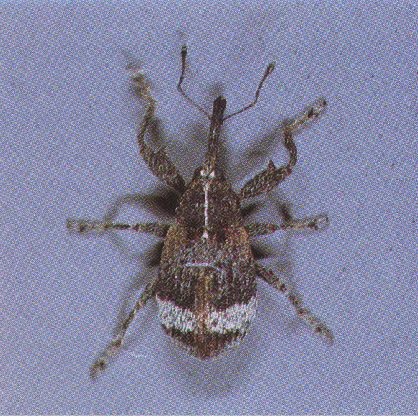Pear bud weevil
Anthonomus pyri
Biology
The pear bud borer(Anthonomus pyri) forms one generation per year.
Around the beginning of September, the beetle first performs a nibbling feast on foliage and flower buds of pear trees. After mating, the females lay their eggs individually in the flower buds. Still in autumn or not until the following spring the larva hatches, which hollows out the bud from the inside. After pupation (around May), the beetle hatches from the destroyed bud. Soon the beetle disappears again to seek an "oversummering hiding place" in crevices and bark cracks. It is not until early September that the beetle returns to the crown area of the pear trees.
Prevention and control
- From September, check for beetle emergence by tapping samples (tapping the beetles onto a light-colored support or into a collection funnel) and visually inspect buds for damage to determine need for and time of treatment.
- Control of adult beetles at the time of ripening feeding in autumn with a plant protection product approved in Austria (see list of plant protection products approved in Austria)
Last updated: 16.09.2024
automatically translated


